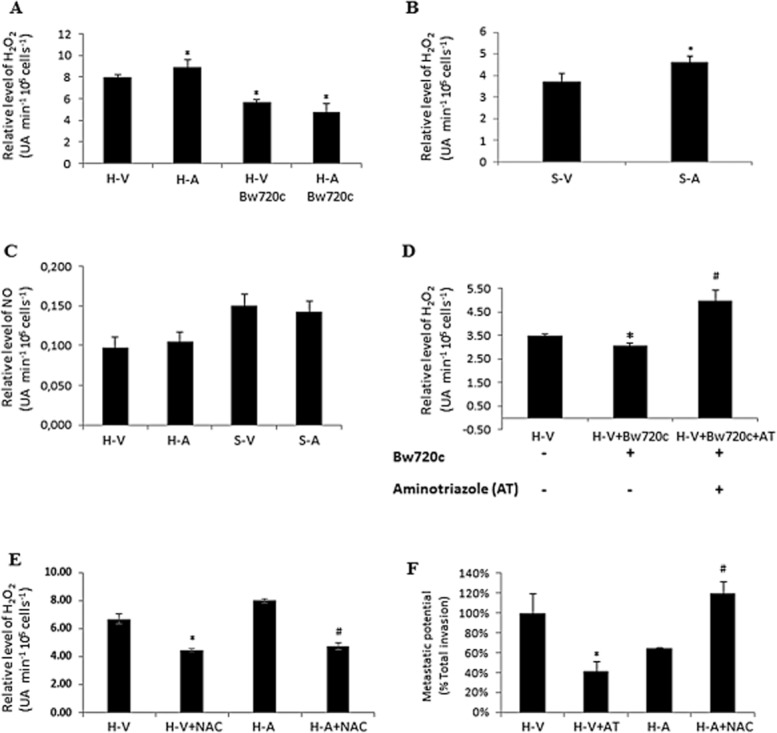Figure 4.

Infection induces H2O2 type oxidative stress and attenuation increases H2O2 output.A. Virulent (H-V) T. annulata-infected macrophages produce less H2O2 than attenuated (H-A) T. annulata-infected macrophages and the amount of H2O2 is reduced upon Bw720c-induced parasite death.B. Virulent Sahiwal/Holstein-Friesian (S-V) T. annulata-infected macrophages produce less H2O2 than attenuated (S-A) macrophages.C. The levels of NO are unchanged between virulent and attenuated T. annulata-infected macrophages of H and S origin, even though Sahiwal/Holstein-Friesian infected macrophages produce more NO.D. Bw720c does not incapacitate macrophage production of H2O2 when host cells are stressed by AT treatment.E. The anti-oxidant NAC reduces H2O2 output by H-V and H-A macrophages.F. Increasing H2O2 output by AT blockade of catalase reduces transwell migration by H-V and conversely, reducing H2O2 levels with NAC increases transwell migration of H-A macrophages. #, *Student’s t-test, highest P-value = 0.04 < 0.05.
